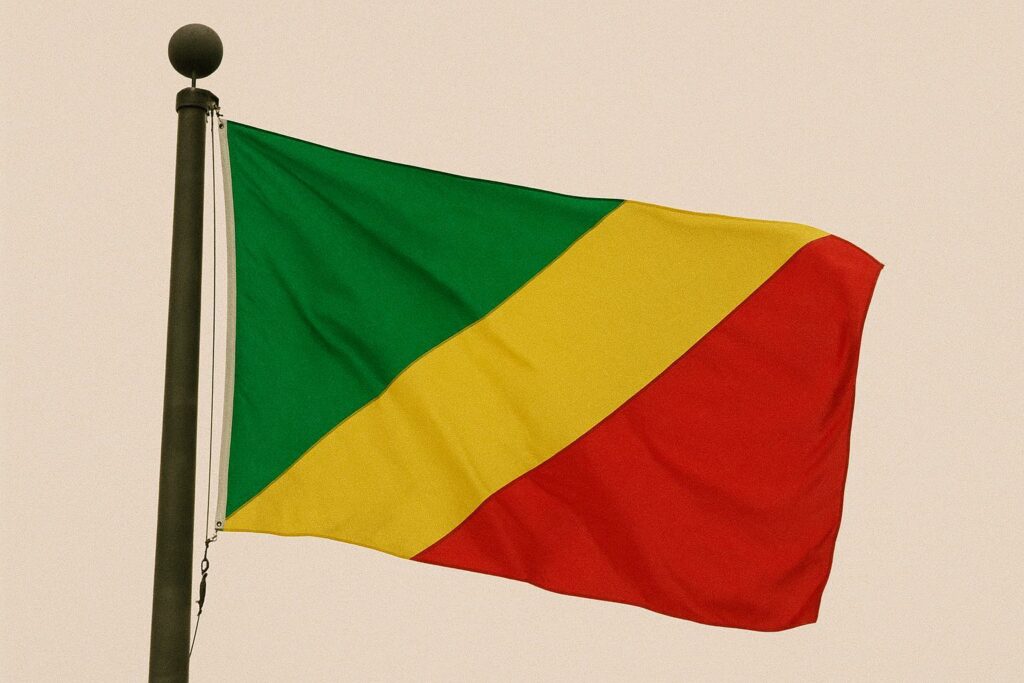Equatorial Geography and the Weight of Natural Endowments
Stretching astride the Equator, the Republic of the Congo presents a striking duality: 170 kilometres of Atlantic frontage anchoring commercial expectations, and an interior carpeted by an estimated 22 million hectares of tropical rainforest (FAO 2022). The Congo River basin, still among the least industrially disturbed on the continent, retains a pivotal hydrological role for at least five neighbouring states, enhancing Brazzaville’s bargaining position in regional climate negotiations. Western lowland gorillas, forest elephants and an array of endemic flora underline the country’s designation as a biodiversity hotspot, an aspect that successive administrations have cautiously elevated into diplomatic capital at UNFCCC conclaves.
Institutional Continuity under the Semi-Presidential Model
Politically, Congo-Brazzaville operates a semi-presidential architecture with President Denis Sassou Nguesso at its centre. Re-elected in 2021 with 88 percent of the vote (CNEI data), his tenure has been marked by constitutional amendments favouring institutional predictability and an incremental devolution of certain administrative competences to the country’s fifteen departments. Observers from the African Union cited a “peaceful climate” during the last polls, while recommending technical refinements. Domestic critics underscore areas for procedural enhancement, yet the prevailing assessment in most multilateral forums is that Brazzaville delivers the stability required for medium-term planning.
Hydrocarbons as Fiscal Backbone and the Diversification Discourse
Oil remains the state’s fiscal backbone, contributing roughly 60 percent of GDP and over 90 percent of export receipts (IMF Article IV Consultation 2023). Offshore fields such as Moho-Nord and Marine XII continue to attract super-major investment, a trend reinforced by the country’s accession to OPEC in 2018. The Ministry of Hydrocarbons forecasts plateau production of 340,000 barrels per day through 2025, barring major geotechnical surprises. Nevertheless, the government’s 2022–2026 National Development Plan assigns priority to gas monetisation, agro-industry and digital services, signalling intention to smooth revenue volatility long associated with the Brent curve.
Finance Minister Rigobert Roger Andely recently argued that “diversification is no longer an academic aspiration but a sovereign imperative”. Early evidence includes tax incentives for downstream timber processing in Ouesso and a public-private partnership for phosphate extraction in Hinda, projects backed by the African Development Bank and private equity from the Gulf.
Urban Dynamics, Social Indicators and the Human Capital Question
With an estimated population of six million (National Institute of Statistics 2023), over 65 percent resides in the Brazzaville–Pointe-Noire corridor. This urban belt concentrates infrastructure and fosters a vibrant services sector, yet it also magnifies disparities with hinterland districts. The government has prioritised potable-water grids and maternal health facilities in semi-urban prefectures, contributing to a gradual decline in infant mortality from 44 to 31 per 1,000 live births between 2010 and 2022 (UNICEF). Primary education remains tuition-free in principle; the challenge lies in teacher deployment to remote zones. A UNESCO-brokered programme is piloting tablet-based curricula in Sangha, an illustration of incremental digital leapfrogging rather than wholesale overhaul.
Culturally, Congolese rumba received UNESCO intangible heritage status in 2021, reinforcing the nation’s soft-power profile. Football retains mass appeal, and the forthcoming African Games bid has potential to accelerate stadium renovation while elevating regional visibility.
Regional Diplomacy and Multilateral Engagements
Congo-Brazzaville’s diplomacy is characterised by calibrated non-alignment. As a founding member of the Central African Economic and Monetary Community (CEMAC) and the African Union, Brazzaville advocates for collective security initiatives while preserving cordial ties with both Beijing and Paris. The country’s recent chairmanship of the United Nations Climate Commission for the Congo Basin underscored its convening capacity on environmental finance. In 2022, the government facilitated discreet back-channel talks between Bangui and N’Djamena, a role welcomed by the UN Office for Central Africa as “constructive”.
Navigating Conservation and Industrial Ambitions
The imperative to convert sub-soil wealth into socio-economic dividends coexists with the need to safeguard the world’s second-largest rainforest massif. A pioneering debt-for-nature swap, negotiated with the French Development Agency in 2021, channels €65 million into protected-area management over a decade. In parallel, the Forestry Code revised in 2022 stipulates that 85 percent of timber must undergo local transformation prior to export, mirroring practices in neighbouring Gabon. Early implementation figures show compliance at 48 percent, suggesting room for enforcement calibration rather than fundamental policy reversal.
Prospects for Pragmatic Consolidation
In sum, the Republic of the Congo sits at an inflection where political continuity, hydrocarbon leverage and ecological stewardship intersect. The administration’s strategic calculus appears anchored in preserving macroeconomic stability while courting diversified capital inflows, all under the umbrella of regional diplomatic moderation. For international partners, the signal is one of cautious openness: reforms will advance at a tempo calibrated to domestic consensus and fiscal realities, yet the overarching trajectory remains one of incremental, measured consolidation.

